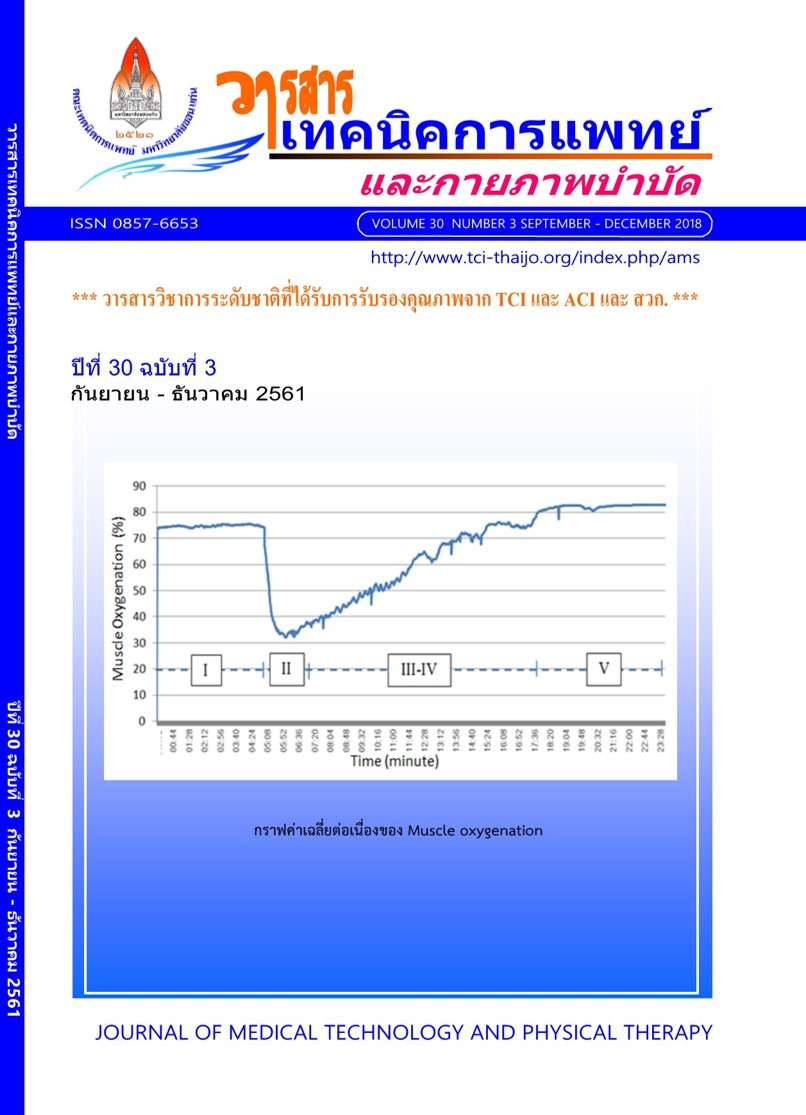A novel technique for correction of magnetic field inhomogeneity of MRI T2*
Main Article Content
Abstract
Tissue iron quantification using MRI T2* has been accepted as a standard method to assess iron accumulation at an early stage in heart, liver and other organs. The reliability of T2* during a longitudinal study could be affected by the variation of magnetic field inhomogeneity. Three phantoms made from MnCl2were built. Phantom was employed for detecting the change of T2* on the OR phantom due to the change of the magnetic field. The study was performed on a 1.5 Tesla, Achieva, Philips, Netherland MRI scanner. The correction factor of R2* or T2* was obtained from a calibration curve in a phantom study at the T2* ranging from 6.76 ms. to 77.00 ms. Two interpolation techniques for getting the correction factor, linear interpolation and piecewise 2nd order polynomial interpolation, were compared in 3 different locations with 3 different values of T2* from the magnetic field perturbations. Magnetic field perturbations at 3 different locations caused the change of OR phantom T2* (13.08ms) with 13.69, 5.66 and 6.80%. By applying a correction factor obtained from linear interpolation method to compensate for the change of the T2* at the 3 locations, the T2* were still different from the original values to 0.15, 14.60 and 5.35%. When applied the piecewise 2nd order polynomial interpolation method for the T2* correction factor, the differences of T2* from the original values reduced to 2.37, 2.06 and 1.30%, respectively.This novel technique is proof of concept for magnetic field inhomogeneity correction using piecewise non-linear interpolation with the field inhomogeneity within 0.74-0.85 part per million The changes of T2* due to magnetic field inhomogeneity over 10% is considered over the range in clinical practice. This novel technique promisingly shows the capability to restore the change of T2* due to external perturbation of the magnetic field.


